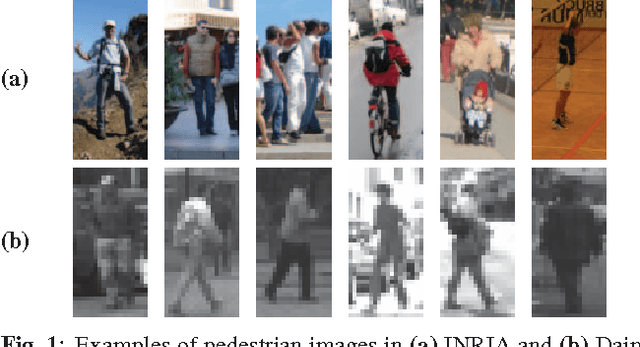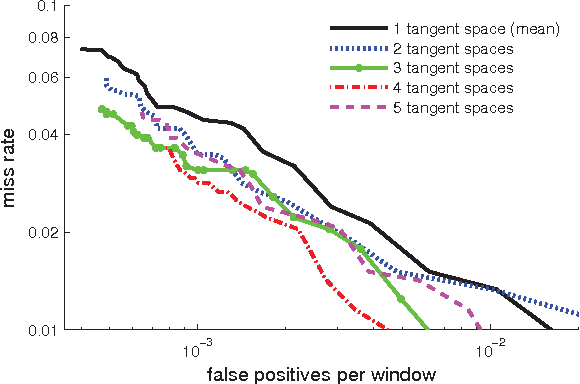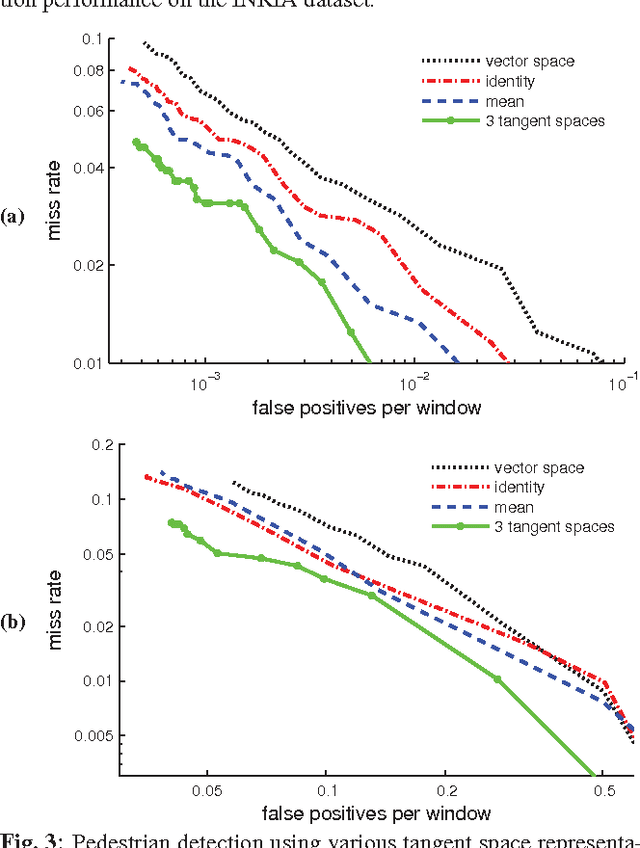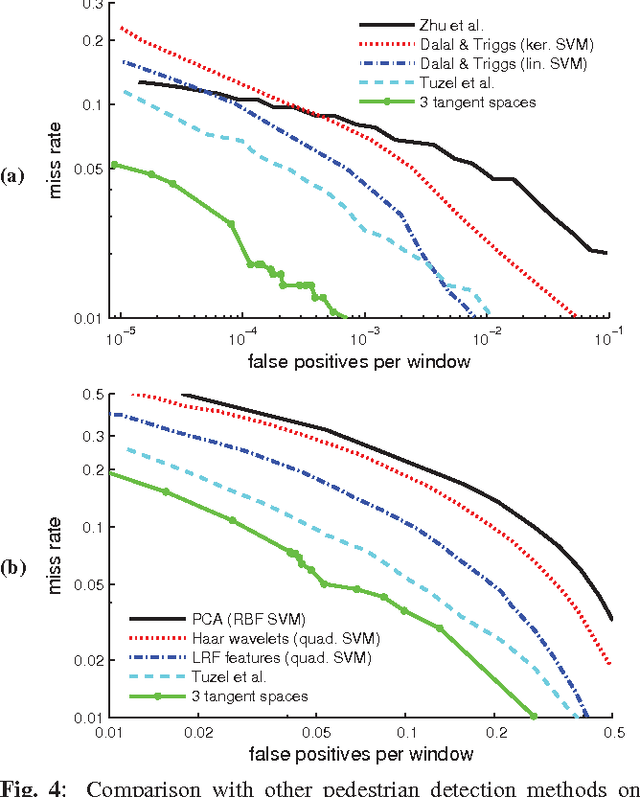K-Tangent Spaces on Riemannian Manifolds for Improved Pedestrian Detection
Paper and Code
Mar 05, 2014



For covariance-based image descriptors, taking into account the curvature of the corresponding feature space has been shown to improve discrimination performance. This is often done through representing the descriptors as points on Riemannian manifolds, with the discrimination accomplished on a tangent space. However, such treatment is restrictive as distances between arbitrary points on the tangent space do not represent true geodesic distances, and hence do not represent the manifold structure accurately. In this paper we propose a general discriminative model based on the combination of several tangent spaces, in order to preserve more details of the structure. The model can be used as a weak learner in a boosting-based pedestrian detection framework. Experiments on the challenging INRIA and DaimlerChrysler datasets show that the proposed model leads to considerably higher performance than methods based on histograms of oriented gradients as well as previous Riemannian-based techniques.
 Add to Chrome
Add to Chrome Add to Firefox
Add to Firefox Add to Edge
Add to Edge